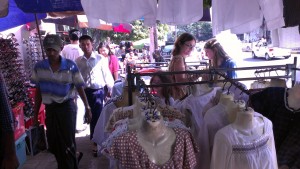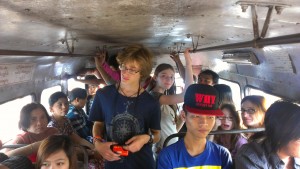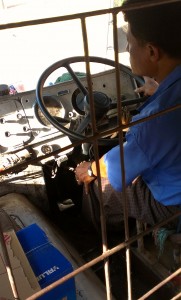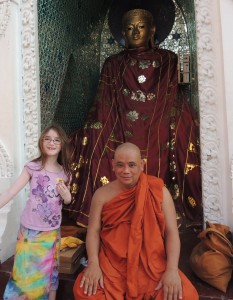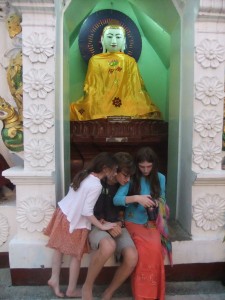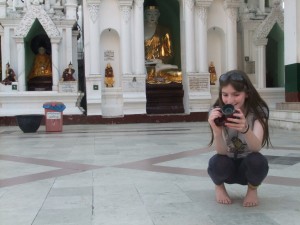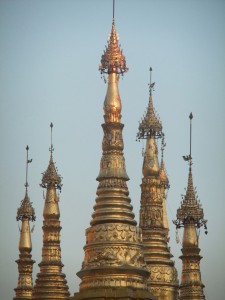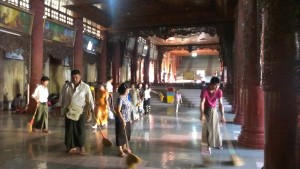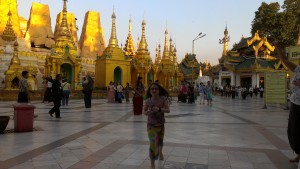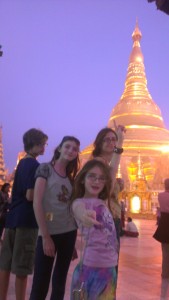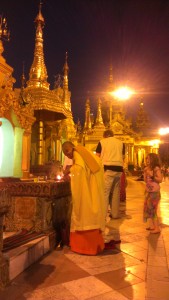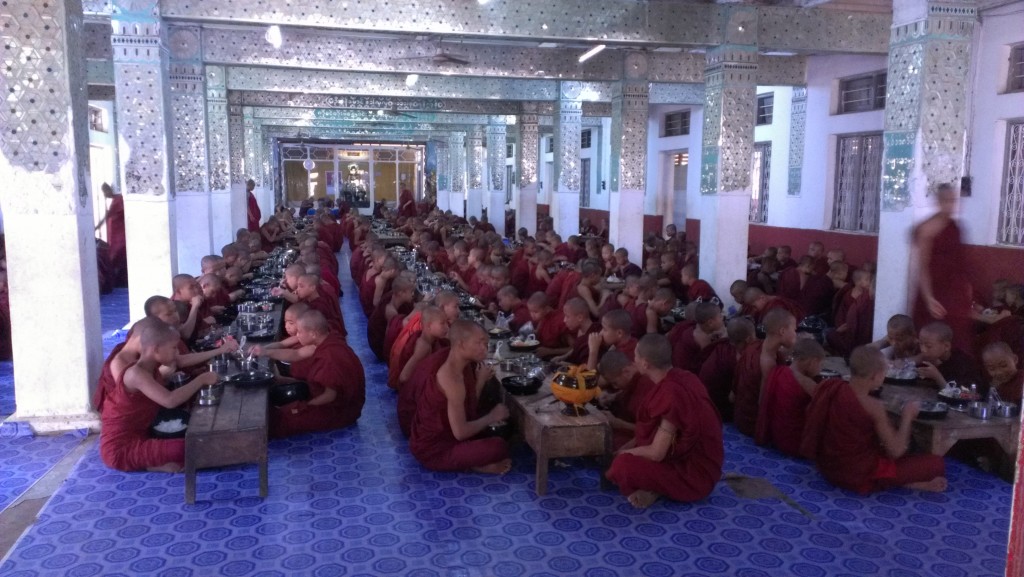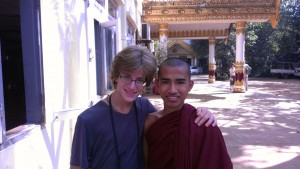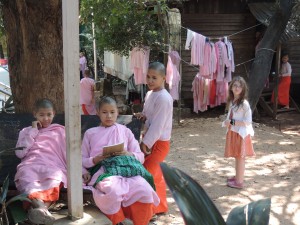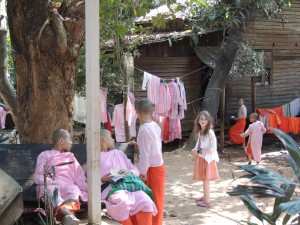Yangon
Yangon is a city of contrasts on the move. It has in one vision modern concrete and glass buildings and at street level typewriters ready to produce documents for the illiterate. Notaries sit roadside among fortunetellers and bird sellers. A mix of ethnicities is everywhere. Old buses, their instruments out of order drive alongside modern air-conditioned tourist buses. Negotiation is a way of life. Honesty and Buddhist symbols are prevalent. The Shwedagon Pagoda, a place of pilgrimage, towers over the city. We visited it twice. Amazingly, no soldiers or policemen are evident. We saw no guns. People tell us that the secret police are all around. We couldn’t tell. (In Russia of old it was much more obvious. A shaven haired stern looking man in an overcoat would stare at you.) Perhaps in Yangon we were watched. We think not. This is a place on the move.
Click on any photo to enlarge it.
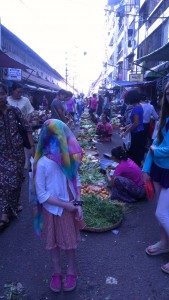
To prevent people from touching her, Avia visits the market in disguise. At this market, stalls were the street but the fish was so fresh it was moving.
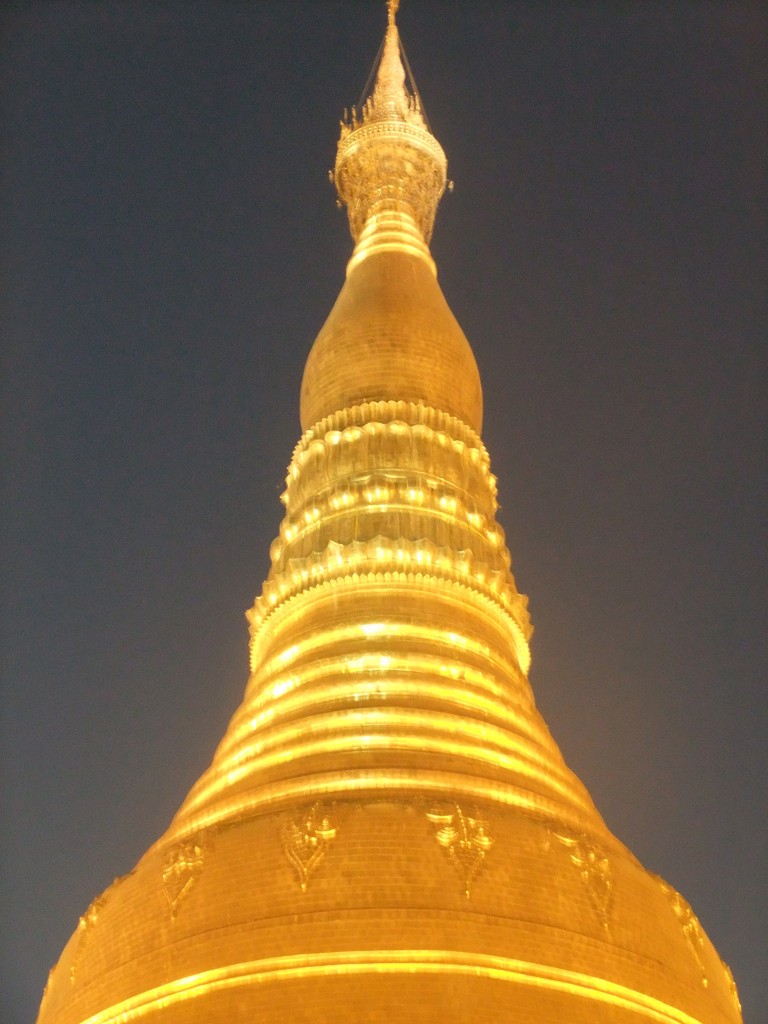
Shwedagon’s Stupa is typical. Buddhist symbols are used. Begging bowl at the bottom, bell, rings, lotus flower, teardrop (pineapple or banana bud), umbrella, jewel
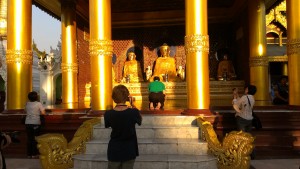
Worshipers believe that the spirit of Buddha actually lives in the statue. This is the idol worship we learnt of in our youth.
Monastery
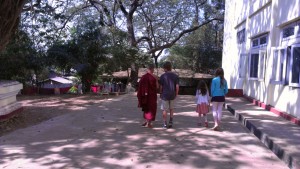
A stroll around the Monastery. He’s practicing his English. We’re learning about life in a monastery.
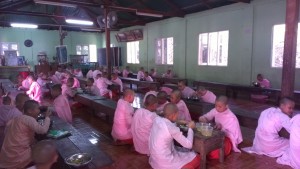
Nuns wear pink robes and shave their heads. Novice nuns and monks enter the Monastery between the ages of 7 and 18 to learn Buddhism. It’s part of everybody’s life.
Here’s a 65 meter reclining Buddha. On his feet are carved symbols of his life and the story of his birth. Theravada’s Buddha is thin and sometimes feminine. The fat Buddha is in fact not a representation of Siddhartha Buddha but of a Chinese monk who claimed upon death to be a Buddha.
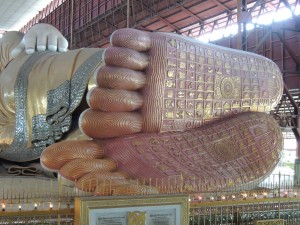
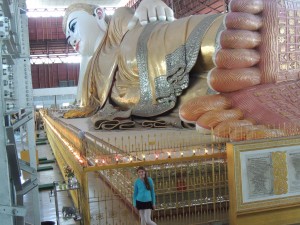 The legend says that when Siddharta was born, he was born with many signs on his feet ( in the photo). His father called all the fortune tellers of the Kingdom to ask them for the meaning. All the fortune tellers said it means that he would one day become the Emperor of the universe or the Buddha. The youngest fortune teller said that one of the signs on his feet was the sign of the Emperor and therefore he must become the Buddha.
The legend says that when Siddharta was born, he was born with many signs on his feet ( in the photo). His father called all the fortune tellers of the Kingdom to ask them for the meaning. All the fortune tellers said it means that he would one day become the Emperor of the universe or the Buddha. The youngest fortune teller said that one of the signs on his feet was the sign of the Emperor and therefore he must become the Buddha.
Recent Posts
Recent Comments
Archives
Categories
- Assignments
- Australia/New Zealand
- Avia
- Bali
- Biomes of the World
- Blog
- botanical pictures
- Cambodia
- Daniela
- David
- December
- Eva
- February
- First Nations of BC
- Hong Kong
- January
- Laos
- March
- Margherita Index
- Myanmar-Burma
- November
- October
- Origins of Oceanian People
- Pacific Northwest Biome
- Photo of the Day
- Polynesia
- Quotes
- September
- South Pacific Biome
- Thailand
- Videos
- Vietnam
- Yannay


